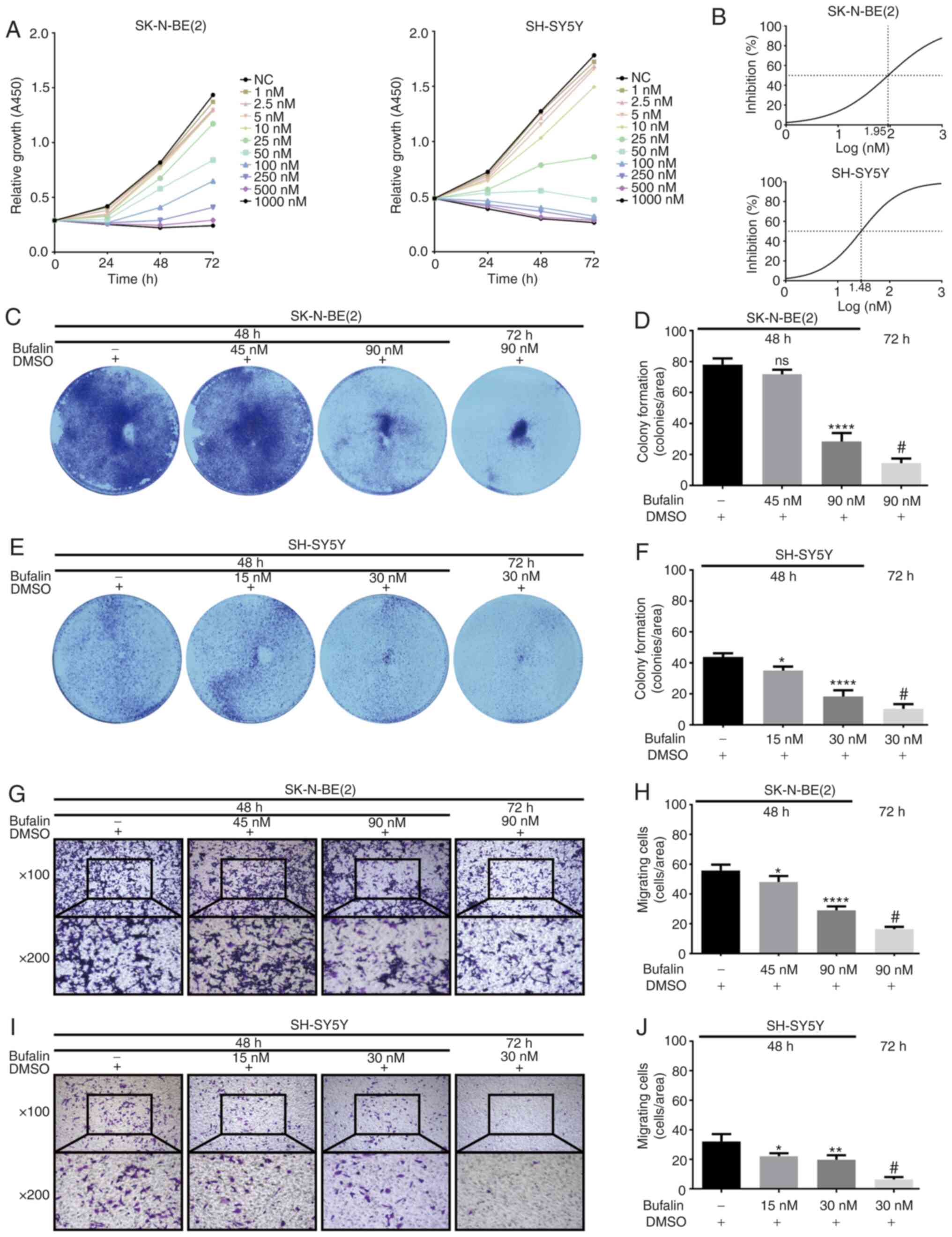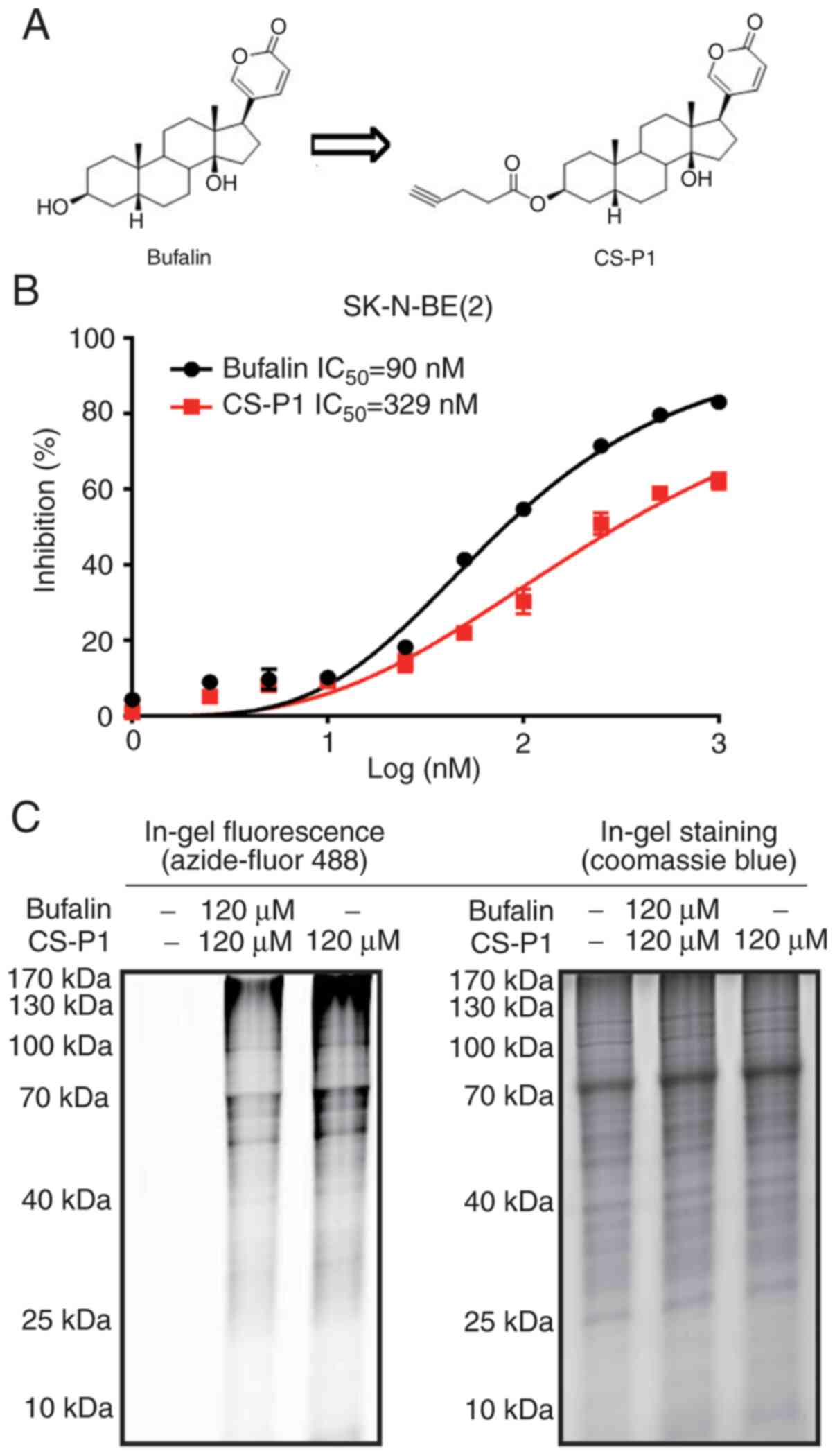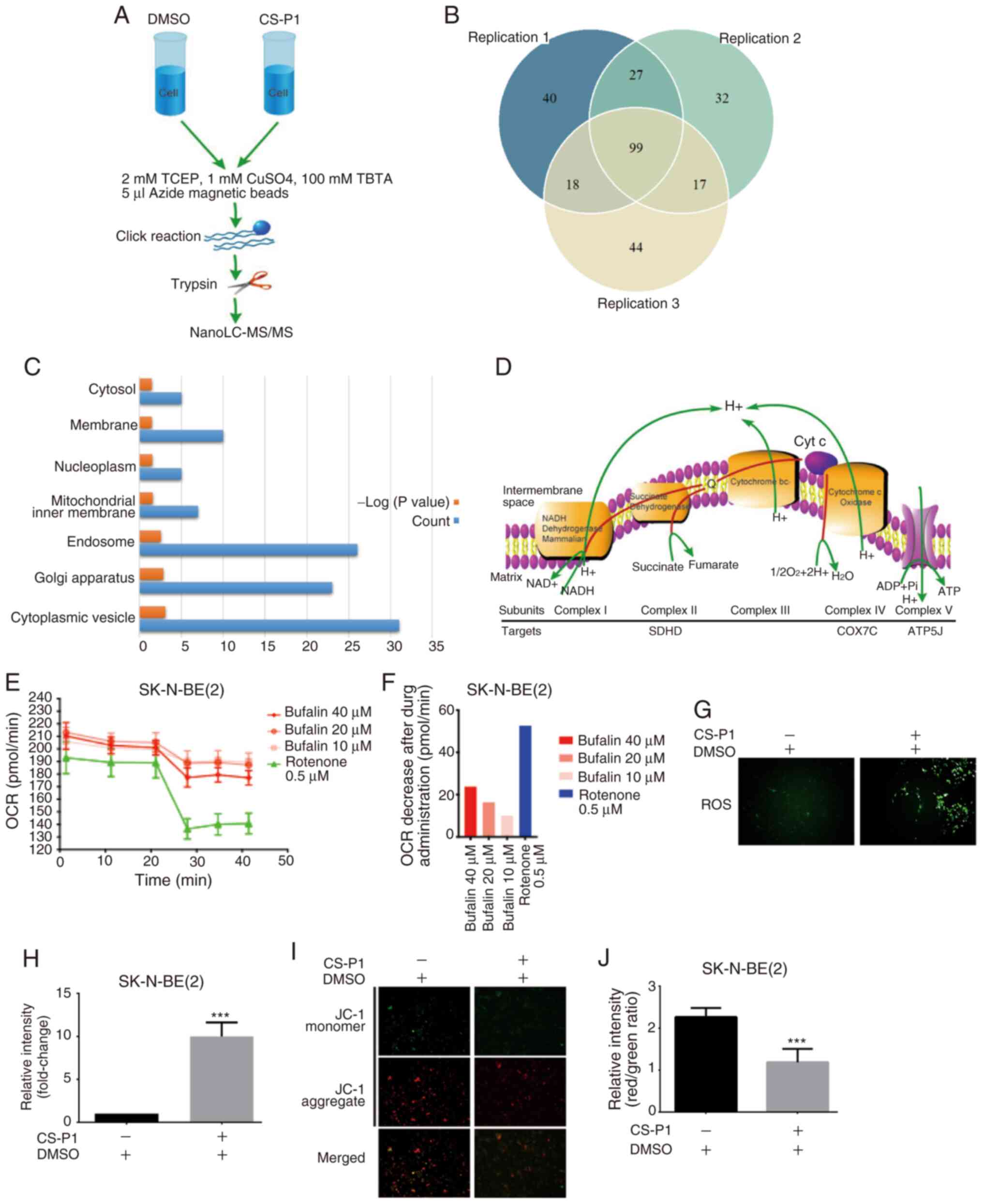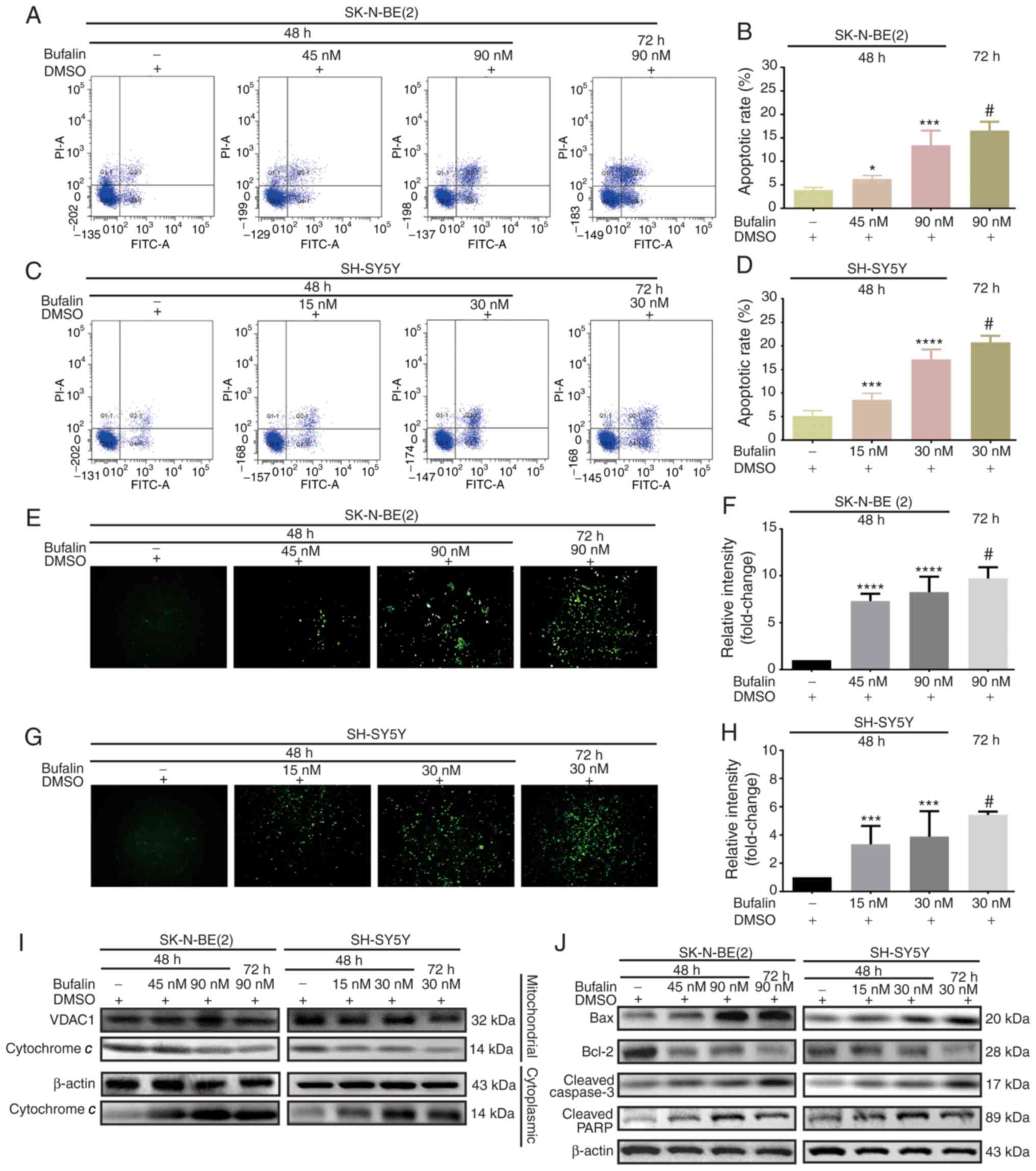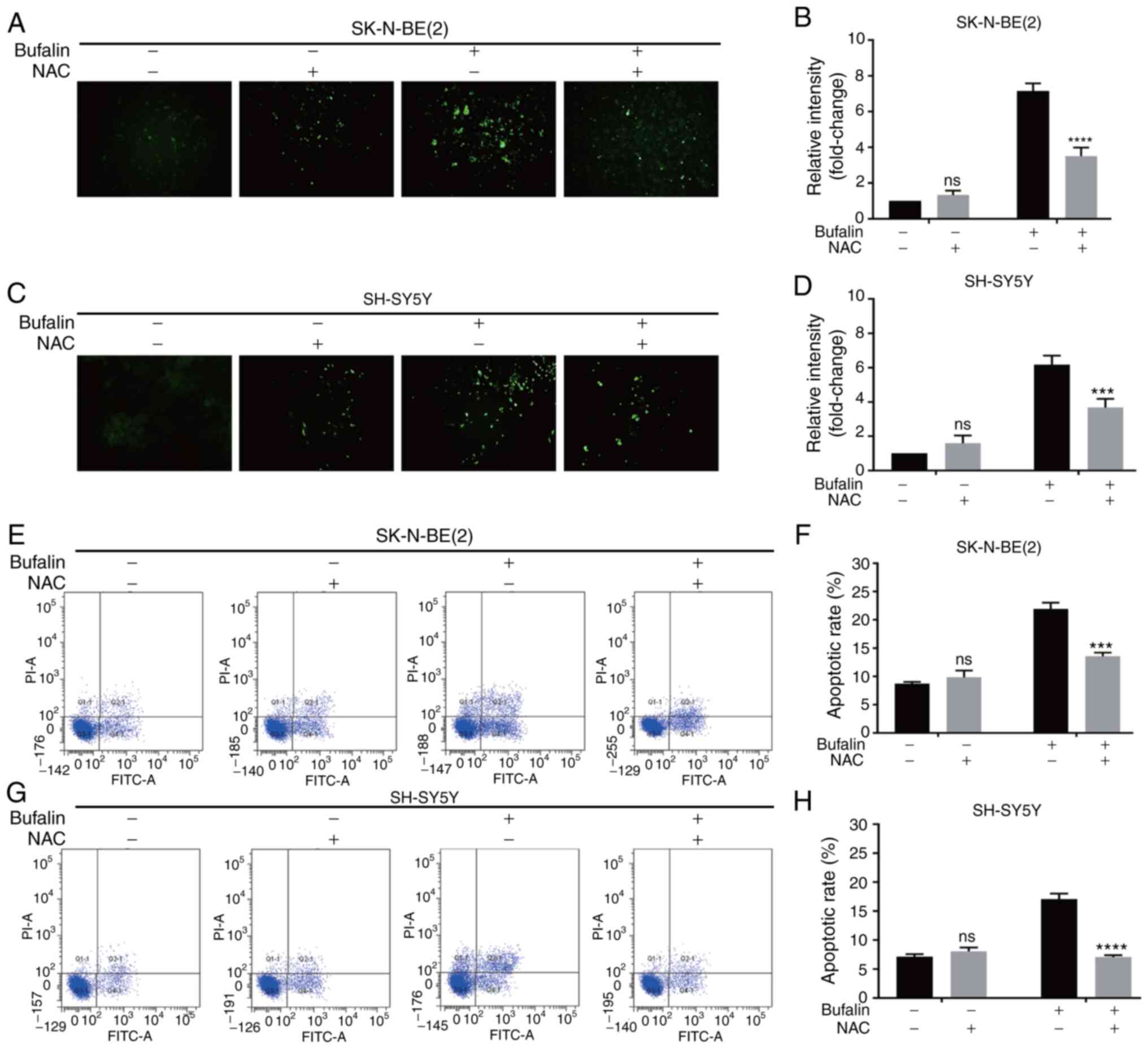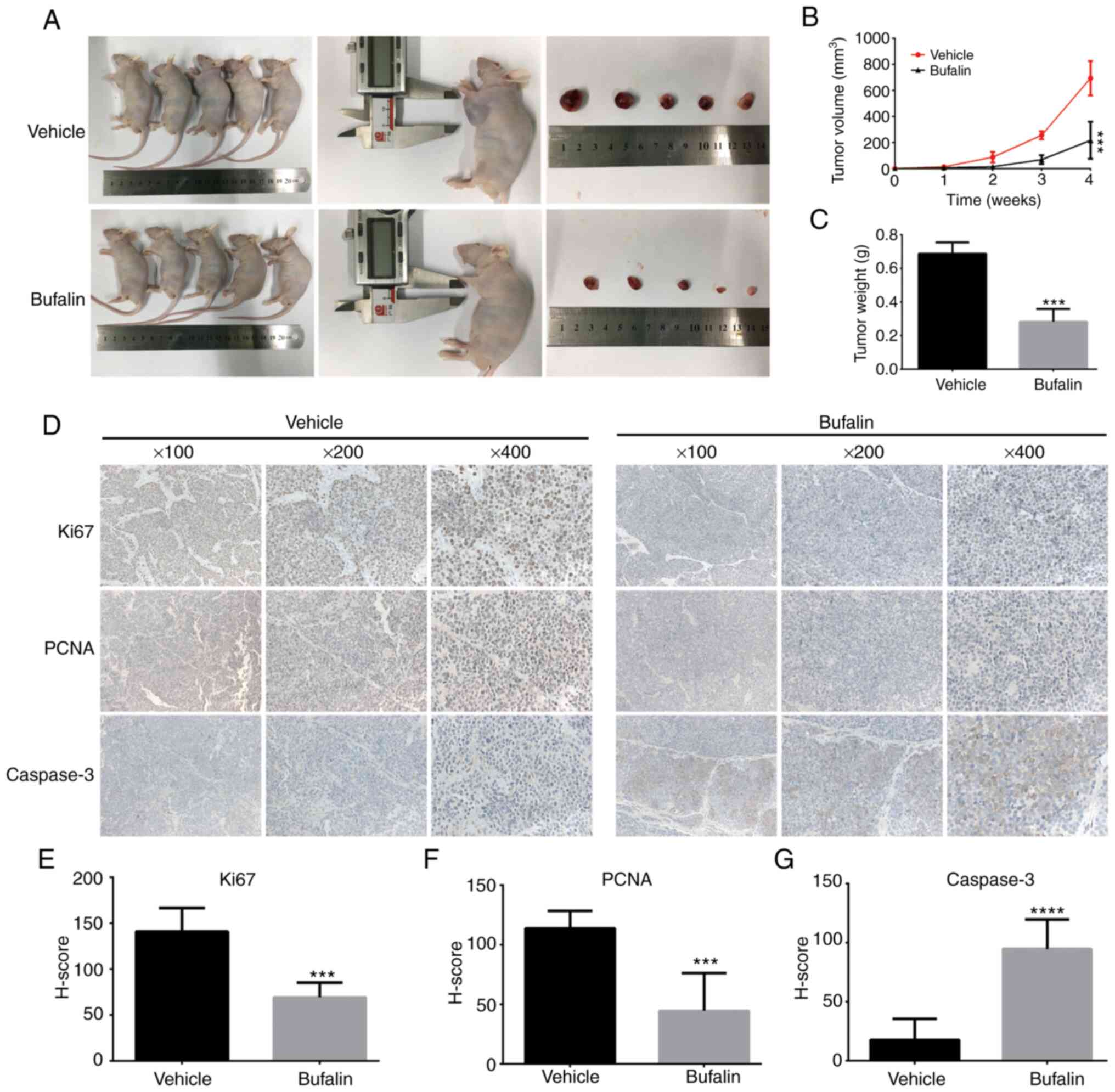|
1
|
Maris JM, Hogarty MD, Bagatell R and Cohn
SL: Neuroblastoma. Lancet. 369:2106–2120. 2007. View Article : Google Scholar : PubMed/NCBI
|
|
2
|
Brodeur GM: Neuroblastoma: Biological
insights into a clinical enigma. Nat Rev Cancer. 3:203–216. 2003.
View Article : Google Scholar : PubMed/NCBI
|
|
3
|
Ackermann S, Cartolano M, Hero B, Welte A,
Kahlert Y, Roderwieser A, Bartenhagen C, Walter E, Gecht J,
Kerschke L, et al: A mechanistic classification of clinical
phenotypes in neuroblastoma. Science. 362:1165–1170. 2018.
View Article : Google Scholar : PubMed/NCBI
|
|
4
|
Matthay KK, Maris JM, Schleiermacher G,
Nakagawara A, Mackall CL, Diller L and Weiss WA: Neuroblastoma. Nat
Rev Dis Primers. 2:160782016. View Article : Google Scholar : PubMed/NCBI
|
|
5
|
Whittle SB, Smith V, Doherty E, Zhao S,
McCarty S and Zage PE: Overview and recent advances in the
treatment of neuroblastoma. Expert Rev Anticancer Ther. 17:369–386.
2017. View Article : Google Scholar : PubMed/NCBI
|
|
6
|
Cheung NK and Dyer MA: Neuroblastoma:
Developmental biology, cancer genomics and immunotherapy. Nat Rev
cancer. 13:397–411. 2013. View Article : Google Scholar : PubMed/NCBI
|
|
7
|
Morgenstern DA, Bagatell R, Cohn SL,
Hogarty MD, Maris JM, Moreno L, Park JR, Pearson AD, Schleiermacher
G, Valteau-Couanet D, et al: The challenge of defining
'ultra-high-risk' neuroblastoma. Pediatr Blood Cancer.
66:e275562019. View Article : Google Scholar
|
|
8
|
Ma Z, Fan Y, Wu Y, Kebebe D, Zhang B, Lu
P, Pi J and Liu Z: Traditional Chinese medicine-combination
therapies utilizing nanotechnology-based targeted delivery systems:
A new strategy for antitumor treatment. Int J Nanomedicine.
14:2029–2053. 2019. View Article : Google Scholar : PubMed/NCBI
|
|
9
|
Zhang Y, Dong Y, Melkus MW, Yin S, Tang
SN, Jiang P, Pramanik K, Wu W, Kim S, Ye M, et al: Role of
P53-Senescence induction in suppression of LNCaP prostate cancer
growth by cardiotonic compound bufalin. Mol Cancer Ther.
17:2341–2352. 2018. View Article : Google Scholar : PubMed/NCBI
|
|
10
|
Wu SH, Hsiao YT, Chen JC, Lin JH, Hsu SC,
Hsia TC, Yang ST, Hsu WH and Chung JG: Bufalin alters gene
expressions associated DNA damage, cell cycle, and apoptosis in
human lung cancer NCI-H460 cells in vitro. Molecules. 19:6047–6057.
2014. View Article : Google Scholar : PubMed/NCBI
|
|
11
|
Hu F, Han J, Zhai B, Ming X, Zhuang L, Liu
Y, Pan S and Liu T: Blocking autophagy enhances the apoptosis
effect of bufalin on human hepatocellular carcinoma cells through
endoplasmic reticulum stress and JNK activation. Apoptosis.
19:210–223. 2014. View Article : Google Scholar
|
|
12
|
Yeh JY, Huang WJ, Kan SF and Wang PS:
Effects of bufalin and cinobufagin on the proliferation of androgen
dependent and independent prostate cancer cells. Prostate.
54:112–124. 2003. View Article : Google Scholar
|
|
13
|
Li Y, Tian X, Liu X and Gong P: Bufalin
inhibits human breast cancer tumorigenesis by inducing cell death
through the ROS-mediated RIP1/RIP3/parp-1 pathways. Carcinogenesis.
39:700–707. 2018. View Article : Google Scholar : PubMed/NCBI
|
|
14
|
Liu X, Xiao XY, Shou QY, Yan JF, Chen L,
Fu HY and Wang JC: Bufalin inhibits pancreatic cancer by inducing
cell cycle arrest via the c-Myc/NF-κB pathway. J Ethnopharmacol.
193:538–545. 2016. View Article : Google Scholar : PubMed/NCBI
|
|
15
|
Liu T, Wu C, Weng G, Zhao Z, He X, Fu C,
Sui Z and Huang SX: Bufalin inhibits cellular proliferation and
cancer stem cell-like phenotypes via upregulation of MiR-203 in
glioma. Cell Physiol Biochem. 44:671–681. 2017. View Article : Google Scholar : PubMed/NCBI
|
|
16
|
Wu SH, Wu TY, Hsiao YT, Lin JH, Hsu SC,
Hsia TC, Yang ST, Hsu WH and Chung JG: Bufalin induces cell death
in human lung cancer cells through disruption of DNA damage
response pathways. Am J Chin Med. 42:729–742. 2014. View Article : Google Scholar : PubMed/NCBI
|
|
17
|
Zhu Z, Sun H, Ma G, Wang Z, Li E and Liu Y
and Liu Y: Bufalin induces lung cancer cell apoptosis via the
inhibition of PI3K/Akt pathway. Int J Mol Sci. 13:2025–2035. 2012.
View Article : Google Scholar : PubMed/NCBI
|
|
18
|
Lan YL, Wang X, Lou JC, Xing JS, Yu ZL,
Wang H, Zou S, Ma X and Zhang B: Bufalin inhibits glioblastoma
growth by promoting proteasomal degradation of the
Na+/K+-ATPase α1 subunit. Biomed
Pharmacother. 103:204–215. 2018. View Article : Google Scholar
|
|
19
|
Cox J and Mann M: MaxQuant enables high
peptide identification rates, individualized p.p.b.-range mass
accuracies and proteome-wide protein quantification. Nat
Biotechnol. 26:1367–1372. 2008. View Article : Google Scholar : PubMed/NCBI
|
|
20
|
Cox J, Neuhauser N, Michalski A, Scheltema
RA, Olsen JV and Mann M: Andromeda: A peptide search engine
integrated into the MaxQuant environment. J Proteome Res.
10:1794–1805. 2011. View Article : Google Scholar : PubMed/NCBI
|
|
21
|
Ashburner M, Ball CA, Blake JA, Botstein
D, Butler H, Cherry JM, Davis AP, Dolinski K, Dwight SS, Eppig JT,
et al: Gene ontology: Tool for the unification of biology. The gene
ontology consortium. Nat Genet. 25:25–29. 2000. View Article : Google Scholar : PubMed/NCBI
|
|
22
|
The Gene Ontology Consortium: The gene
ontology resource: 20 years and still GOing strong. Nucleic Acids
Res. 47:D330–D338. 2019. View Article : Google Scholar :
|
|
23
|
Yeo W, Chan SL, Mo FK, Chu CM, Hui JW,
Tong JH, Chan AW, Koh J, Hui EP, Loong H, et al: Phase I/II study
of temsirolimus for patients with unresectable hepatocellular
carcinoma (HCC)-a correlative study to explore potential biomarkers
for response. BMC Cancer. 15:3952015. View Article : Google Scholar
|
|
24
|
Qi F, Li A, Inagaki Y, Kokudo N, Tamura S,
Nakata M and Tang W: Antitumor activity of extracts and compounds
from the skin of the toad Bufo bufo gargarizans cantor. Int
Immunopharmacol. 11:342–349. 2011. View Article : Google Scholar
|
|
25
|
Jackson PA, Widen JC, Harki DA and
Brummond KM: Covalent modifiers: A chemical perspective on the
reactivity of α,β-Unsaturated carbonyls with thiols via
hetero-michael addition reactions. J Med Chem. 60:839–885. 2017.
View Article : Google Scholar
|
|
26
|
Wang Y, Lonard DM, Yu Y, Chow DC, Palzkill
TG, Wang J, Qi R, Matzuk AJ, Song X, Madoux F, et al: Bufalin is a
potent small-molecule inhibitor of the steroid receptor
coactivators SRC-3 and SRC-1. Cancer Res. 74:1506–1517. 2014.
View Article : Google Scholar : PubMed/NCBI
|
|
27
|
Larosa V and Remacle C: Insights into the
respiratory chain and oxidative stress. Biosci Rep.
38:BSR201714922018. View Article : Google Scholar : PubMed/NCBI
|
|
28
|
Battogtokh G, Choi YS, Kang DS, Park SJ,
Shim MS, Huh KM, Cho YY, Lee JY, Lee HS and Kang HC:
Mitochondria-targeting drug conjugates for cytotoxic,
anti-oxidizing and sensing purposes: Current strategies and future
perspectives. Acta Pharm Sin B. 8:862–880. 2018. View Article : Google Scholar : PubMed/NCBI
|
|
29
|
Hou XS, Wang HS, Mugaka BP, Yang GJ and
Ding Y: Mitochondria: Promising organelle targets for cancer
diagnosis and treatment. Biomater Sci. 6:2786–2797. 2018.
View Article : Google Scholar : PubMed/NCBI
|
|
30
|
Dai G, Zheng D, Guo W, Yang J and Cheng
AY: Cinobufagin induces apoptosis in osteosarcoma cells via the
mitochondria-mediated apoptotic pathway. Cell Physiol Biochem.
46:1134–1147. 2018. View Article : Google Scholar : PubMed/NCBI
|
|
31
|
Li P, Nijhawan D, Budihardjo I,
Srinivasula SM, Ahmad M, Alnemri ES and Wang X: Cytochrome c and
dATP-dependent formation of Apaf-1/caspase-9 complex initiates an
apoptotic protease cascade. Cell. 91:479–489. 1997. View Article : Google Scholar : PubMed/NCBI
|
|
32
|
Yu Z, Feng H, Sun X, Zhuo Y, Li M, Zhou Z,
Huang L, Jiang Y, Zhu X, Zhang X, et al: Bufalin suppresses
hepatocarcinogenesis by targeting β-catenin/TCF signaling via cell
cycle-related kinase. Sci Rep. 8:38912018. View Article : Google Scholar
|
|
33
|
Liu J, Zhang Y, Sun S, Zhang G, Jiang K,
Sun P, Zhang Y, Yao B, Sui R, Chen Y, et al: Bufalin induces
apoptosis and improves the sensitivity of human glioma stem-like
cells to temozolamide. Oncol Res. 27:475–486. 2019. View Article : Google Scholar
|
|
34
|
Li H, Hu S, Pang Y, Li M, Chen L, Liu F,
Liu M, Wang Z and Cheng X: Bufalin inhibits glycolysis-induced cell
growth and proliferation through the suppression of Integrin β2/FAK
signaling pathway in ovarian cancer. Am J Cancer Res. 8:1288–1296.
2018.
|
|
35
|
Zhang L, Nakaya K, Yoshida T and Kuroiwa
Y: Induction by bufalin of differentiation of human leukemia cells
HL60, U937, and ML1 toward macrophage/monocyte-like cells and its
potent synergistic effect on the differentiation of human leukemia
cells in combination with other inducers. Cancer Res. 52:4634–4641.
1992.PubMed/NCBI
|
|
36
|
Xie CM, Chan WY, Yu S, Zhao J and Cheng
CH: Bufalin induces autophagy-mediated cell death in human colon
cancer cells through reactive oxygen species generation and JNK
activation. Free Radic Biol Med. 51:1365–1375. 2011. View Article : Google Scholar : PubMed/NCBI
|
|
37
|
Su EY, Chu YL, Chueh FS, Ma YS, Peng SF,
Huang WW, Liao CL, Huang AC and Chung JG: Bufalin induces apoptotic
cell death in human nasopharyngeal carcinoma cells through
mitochondrial ROS and TRAIL pathways. Am J Chin Med. 47:237–257.
2019. View Article : Google Scholar : PubMed/NCBI
|
|
38
|
Liu T, Jia T, Yuan X, Liu C, Sun J, Ni Z,
Xu J, Wang X and Yuan Y: Development of octreotide-conjugated
polymeric prodrug of bufalin for targeted delivery to somatostatin
receptor 2 overexpressing breast cancer in vitro and in vivo. Int J
Nanomedicine. 11:2235–2250. 2016.PubMed/NCBI
|
|
39
|
Xu J, Sun Y, Yuan Z, Bao Y, Li R, Liu C,
Qiu Y, Xu K, Shi X, Yu H, et al: Bufalin-loaded CaP/DPPE-PEG-EGF
nanospheres: Preparation, cellular uptake, distribution, and
anti-tumor effects. J Biomed Nanotechnol. 15:329–339. 2019.
View Article : Google Scholar : PubMed/NCBI
|
|
40
|
Shen S, Zhang Y, Wang Z, Liu R and Gong X:
Bufalin induces the interplay between apoptosis and autophagy in
glioma cells through endoplasmic reticulum stress. Int J Biol Sci.
10:212–224. 2014. View Article : Google Scholar : PubMed/NCBI
|
|
41
|
Xiang RF, Wang Y, Zhang N, Xu WB, Cao Y,
Tong J, Li JM, Wu YL and Yan H: MK2206 enhances the cytocidal
effects of bufalin in multiple myeloma by inhibiting the AKT/mTOR
pathway. Cell Death Dis. 8:e27762017. View Article : Google Scholar : PubMed/NCBI
|
|
42
|
Zhang X, Huang Q, Wang X, Xu Y, Xu R, Han
M, Huang B, Chen A, Qiu C, Sun T, et al: Bufalin enhances
radiosensitivity of glioblastoma by suppressing mitochondrial
function and DNA damage repair. Biomed Pharmacother. 94:627–635.
2017. View Article : Google Scholar : PubMed/NCBI
|
|
43
|
Drewes G and Knapp S: Chemoproteomics and
chemical probes for target discovery. Trends Biotechnol.
36:1275–1286. 2018. View Article : Google Scholar : PubMed/NCBI
|
|
44
|
Klaeger S, Heinzlmeir S, Wilhelm M, Polzer
H, Vick B, Koenig PA, Reinecke M, Ruprecht B, Petzoldt S, Meng C,
et al: The target landscape of clinical kinase drugs. Science.
358:eaan43682017. View Article : Google Scholar : PubMed/NCBI
|
|
45
|
Bantscheff M, Eberhard D, Abraham Y,
Bastuck S, Boesche M, Hobson S, Mathieson T, Perrin J, Raida M, Rau
C, et al: Quantitative chemical proteomics reveals mechanisms of
action of clinical ABL kinase inhibitors. Nat Biotechnol.
25:1035–1044. 2007. View Article : Google Scholar : PubMed/NCBI
|
|
46
|
Seeger RC, Brodeur GM, Sather H, Dalton A,
Siegel SE, Wong KY and Hammond D: Association of multiple copies of
the N-myc oncogene with rapid progression of neuroblastomas. N Engl
J Med. 313:1111–1116. 1985. View Article : Google Scholar : PubMed/NCBI
|
|
47
|
Biedler JL and Spengler BA: Metaphase
chromosome anomaly: Association with drug resistance and
cell-specific products. Science. 191:185–187. 1976. View Article : Google Scholar : PubMed/NCBI
|
|
48
|
Biedler JL, Roffler-Tarlov S, Schachner M
and Freedman LS: Multiple neurotransmitter synthesis by human
neuroblastoma cell lines and clones. Cancer Res. 38:3751–3757.
1978.PubMed/NCBI
|
|
49
|
Liu T, Yuan X, Jia T, Liu C, Ni Z, Qin Z
and Yuan Y: Polymeric prodrug of bufalin for increasing solubility
and stability: Synthesis and anticancer study in vitro and in vivo.
Int J Pharm. 506:382–393. 2016. View Article : Google Scholar : PubMed/NCBI
|
|
50
|
Chen Q and Liu J: Transferrin and folic
acid co-modified bufalin-loaded nanoliposomes: Preparation,
characterization, and application in anticancer activity. Int J
Nanomedicine. 13:6009–6018. 2018. View Article : Google Scholar : PubMed/NCBI
|
|
51
|
Shi XJ, Qiu YY, Yu H, Liu C, Yuan YX, Yin
PH and Liu T: Increasing the anticancer performance of bufalin
(BUF) by introducing an endosome-escaping polymer and
tumor-targeting peptide in the design of a polymeric prodrug.
Colloids Surf B Biointerfaces. 166:224–234. 2018. View Article : Google Scholar : PubMed/NCBI
|















